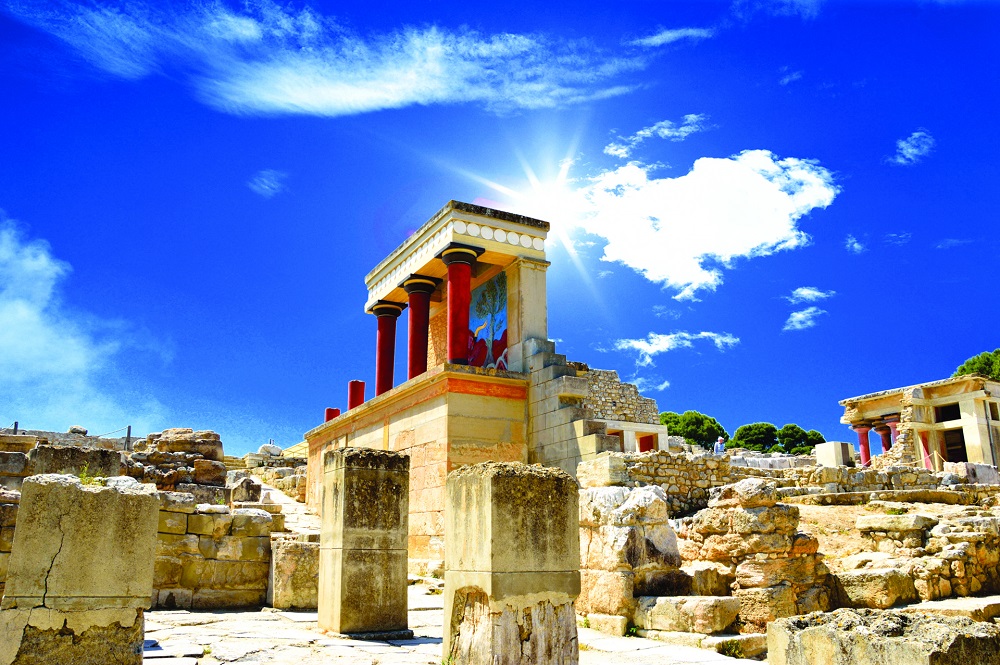
Archaeological Site of Knossos
Knossos is the heart of the Minoan civilization, according to tradition the seat of the legendary king Minos and the birthplace of thrilling stories, such as the myths of the Labyrinth with its Minotaur and of Daidalos and Icaros. The site was inhabited continuously from the Neolithic period (7000-3000 BC) until the late Antiquity. The first epigraphical testimony derives from the 14th century BC Linear B tablets, where the city is referred to as Ko-no-so. The Minoan settlement of Knossos develops especially during the palatial era, which is defined by the periods of the Old (19th-17th centuries BC) and New Palaces (16th-14th centuries BC) respectively. In the latter period the Minoan civilization reaches its peak, with a vigour that is reflected at all levels: population growth and subsequent residential expansion, economic prosperity and social complexity, flourishing of the material culture with the palatial art reaching its apogee. In 1450 BC the palaces of Crete are destroyed by causes, for which there is no consensus among researchers. Nevertheless, the fall of the palaces marks the end of the Minoan civilization. Only the palace of Knossos will survive for a century still, as the seat of the new rulers of Crete, the Mycenaeans. The city of the historical times left behind scarce remains, mainly sanctuaries and graves; throughout Greek antiquity, Knossos will survive in the literary sources, from the time of Homer till the Hellenistic historian Diodorus Sikeliotes, as the glorious kingdom of the mythical Minos. Knossos flourished again during the Hellenistic period, while in 67 BC the city was occupied by the Roman consul Quintus Caecilius Metelus Creticus and became a Roman colony. In the medieval times, a few kilometers northwards of Knossos, would emerge the new capital of the island, the city of Chandax, namely the contemporary Heraklion.
The location of ancient Knossos was first spotted in 1878 by the Cretan antiquarian and merchant Minos Kalokairinos. Arthur Evans conducted systematic excavations at the site between 1900 and 1931, bringing to light the palace, a large section of the Minoan city, and its cemeteries. Since then, the site and its wider region have been excavated by the British School of Archaeology at Athens and the local Archaeological Service. The restoration of the palace to its present form was carried out by Arthur Evans. Conservation and consolidation works are carried out by the Archaeological Service of the Ministry of Culture, imposed by the need to preserve and protect the monuments uncovered.
COM_SPPORTFOLIO_BACK_TO_CATEGORY
